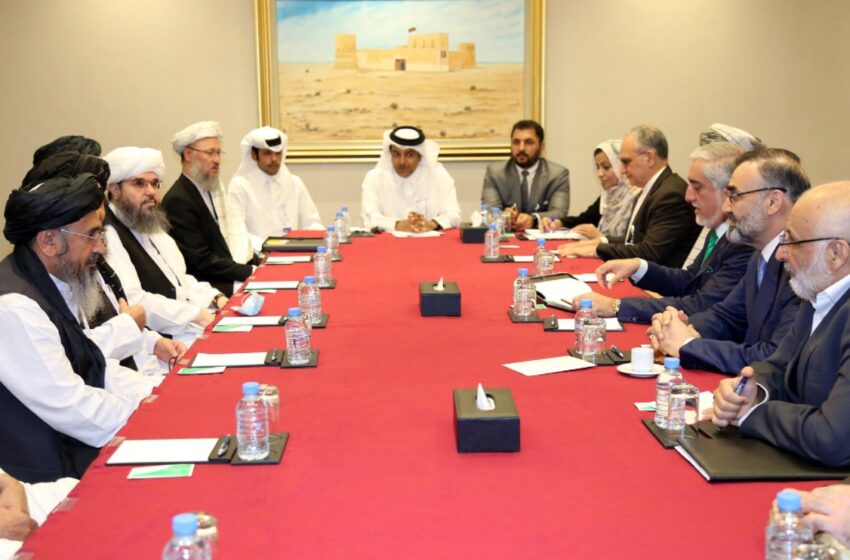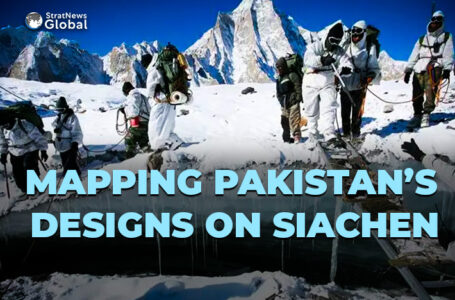Afghan Forces, Taliban & The Shifting Sands Of Territory Control

Meetings between the negotiating teams of the Afghan Republic and the Taliban continued in Doha for the second day on Sunday. (Photo: @DrabdullahCE)
NEW DELHI: News coming out of Afghanistan ranges from bad to worse, tending to reinforce the impression that the collapse of the Ashraf Ghani government may be imminent. But as always, the truth is a little different, and as StratNewsGlobal learns, it could well be that government forces hold their own.
In 1996 when the Taliban captured Kabul, they were able to leverage the advantage afforded by sanctuaries in Pakistan. Those sanctuaries still exist: latest reports speak of 10,000 fighters from Pakistan infiltrating through the long porous border to bolster Taliban foot soldiers estimated (by the U.S. think tank Council on Foreign Relations-CFR) at between 55,000 and 85,000; the CFR says the Taliban can also rely on support from the estimated 200 to 500 Al-Qaeda fighters in Afghanistan (proving the point that the latter’s claim of cutting ties with Al Qaeda is a lie).
Ranged against them are about 70,000 Afghan government forces defending approaches to Kabul. They are well armed, have some back up in the form of artillery and tanks and more important, air support (mostly helicopters). They can be supplied by air given that Kabul airport and the huge Bagram air base remain open (India recently sent a consignment of mortar ammunition to Kabul; presumably, more will be sent). It is presumed that the departing Americans left behind sufficient stocks of ammunition and spare parts for the equipment being used by the Afghan military.
That the Taliban has Pakistani logistical support is a given. The speed with which Taliban fighting columns have moved, followed by lightning strikes on government positions, capture of official ministries in several provinces and an equally speedy withdrawal, suggests significant resources at their command.
The curious element of this phase of the war is the “battle for check posts”. It began with the Taliban seizing the Shir Khan Bandar border crossing with Tajikistan last month, followed by Ishkashim that leads into Tajikistan’s part of the Wakhan Corridor. Control of Shir Khan Bandar will bring the Taliban revenues from border trade. Smartly, they have insisted that trade continue, no customs personnel have been changed and all documentation is as per Afghan government guidelines.
Earlier this month, the Taliban captured the Islam Qala border crossing with Iran. More recently, there was a ding dong battle for the control of Spin Boldak in Kandahar province bordering Pakistan. Afghan forces say they have retaken it but given the constantly shifting nature of the battle, it’s hard to tell who controls what.
The Taliban has made attempts in the past to capture the Hayratan post, a trade and transit hub on the border with Uzbekistan. Reports say the Afghan army has built up a 5-km security buffer around Hayratan and that’s where matters rest at the moment.
Confusion persists with regard to how much territory the Taliban controls. StratNewsGlobal learns that it is about 30 per cent in the rural areas, while much of the rest of the country is contested. Their strategy seems to centre on taking control of districts seen as supply and transport hubs. Thus the capture of Imam Sahib district in Kunduz last month strengthened their control over the border with Tajikistan and over a supply route from Central Asia. Capture of Doshi district in Baghlan province has given them control of the one highway that links five northern provinces to Kabul.
What is seen as worrying is the Taliban march in the northern provinces, populated by the minority Tajiks and Uzbeks. In the 1990s, they formed the coalition against the Taliban (the Northern Alliance) but this time matters seem different. The Taliban see this area as their Achilles heel. The question is whether they have been able to co-opt the minorities into joining them.
A word about the Pashtuns, and this could be the silver lining for the Ghani government. It appears that unlike the last time when the Pashtuns were seen to be solidly behind the Taliban, the evidence in that regard is less strong now. It suggests that the Pashtuns are divided in their backing for the Taliban. Many have died as the Taliban carried on their campaign across the length and breadth of the country, including the capital Kabul. The attacks have been indiscriminate: government and police have been targeted as have civilians, hospitals, schools and the media. From suicide strikes to remotely detonated bombs and IEDs, Pashtuns have suffered casualties that may have turned many away from the Taliban. There are reports of Pashtun communities denying the Taliban food and other supplies.
How strong and widespread the Pashtun recoil is remains to be seen. The key question is whether at some point, the Taliban will recognise that their bloody campaign has gone far enough and negotiations are the way forward.






















